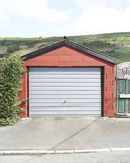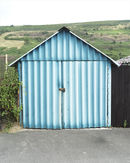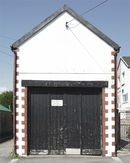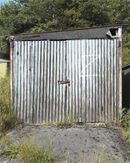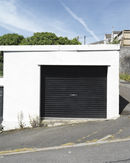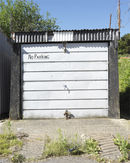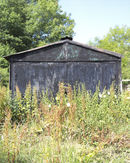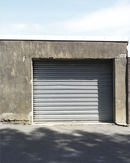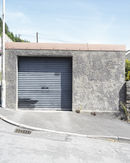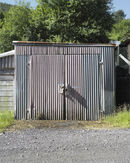Garage
GARAGE
The development of garages in the south Wales Valleys has been shaped by the region’s unique topography, history and economy. These factors, more than in any other region or nation in the UK, has led to transport in Wales becoming dominated by the motor car.
During the 1950s and 1960s there was a rapid expansion of garage building as car ownership grew in the relevant affluence of an emerging consumerist society. Before this period the motor car was rarely seen in the streets of the Valleys – where one was seen, it usually belonged to the local doctor. Today, we accept that car ownership is an important symbol of prosperity for households in the terraces. The terraces had been designed and built with little consideration for the growth of car ownership that would follow. This has often led to the placement and design of garages to accommodate the family car as being both innovative and bespoke.
Looking at contemporary garages in the Valleys it is clear that not all are used to house cars. Many are used as ‘lock-ups’, perhaps to store the overspill from households or, perhaps more romantically, to act as the repositories for the memories and desires of their owners. There is a deep irony in that the current plans to reduce the region’s reliance on cars through a ‘Metro’ rapid transport system will be both expensive and difficult to deliver. The necessary rail infrastructure was actually in place in 1946 but then dismantled in the 1960s and 1970s. Many of those former railway tracks were sold for development or the construction of new roads to ease the burgeoning traffic congestion in the Valleys at that time.
The development of garages in the south Wales Valleys has been shaped by the region’s unique topography, history and economy. These factors, more than in any other region or nation in the UK, has led to transport in Wales becoming dominated by the motor car.
During the 1950s and 1960s there was a rapid expansion of garage building as car ownership grew in the relevant affluence of an emerging consumerist society. Before this period the motor car was rarely seen in the streets of the Valleys – where one was seen, it usually belonged to the local doctor. Today, we accept that car ownership is an important symbol of prosperity for households in the terraces. The terraces had been designed and built with little consideration for the growth of car ownership that would follow. This has often led to the placement and design of garages to accommodate the family car as being both innovative and bespoke.
Looking at contemporary garages in the Valleys it is clear that not all are used to house cars. Many are used as ‘lock-ups’, perhaps to store the overspill from households or, perhaps more romantically, to act as the repositories for the memories and desires of their owners. There is a deep irony in that the current plans to reduce the region’s reliance on cars through a ‘Metro’ rapid transport system will be both expensive and difficult to deliver. The necessary rail infrastructure was actually in place in 1946 but then dismantled in the 1960s and 1970s. Many of those former railway tracks were sold for development or the construction of new roads to ease the burgeoning traffic congestion in the Valleys at that time.


